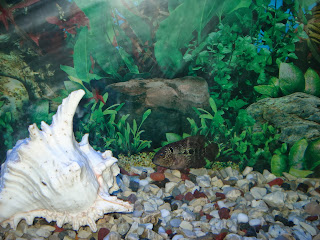BREEDING ANGELFISH

Common Name: Angelfish Scientific Name: Pterophyllum scalare Wild Distribution: Tributaries and basins. South America Length: Up to 6 inches Water Temperature: 74 to 83f If you are an avid fish breeder, you know what the angelfish is all about. If not, boy are you missing out! I can't think of anything much more rewarding than a prized pair of angelfish with their young. This fish teeters a hobbyist into a new realm of fish keeping. Over the years, angelfish have taken many faces. Like the fancy guppy, they have jogged the genetic trail: silvers, marbles, gold marbles, leopards, blushers - the list goes on and on. For this reason it is difficult to give you a description. Angelfish are from the cichlid family and can be very aggressive at times. Experience will tell you that there is a time and a place for angelfish in the community tank. As with most large fish, angels develop a personality. There's no comparing one to the next. Males and...





